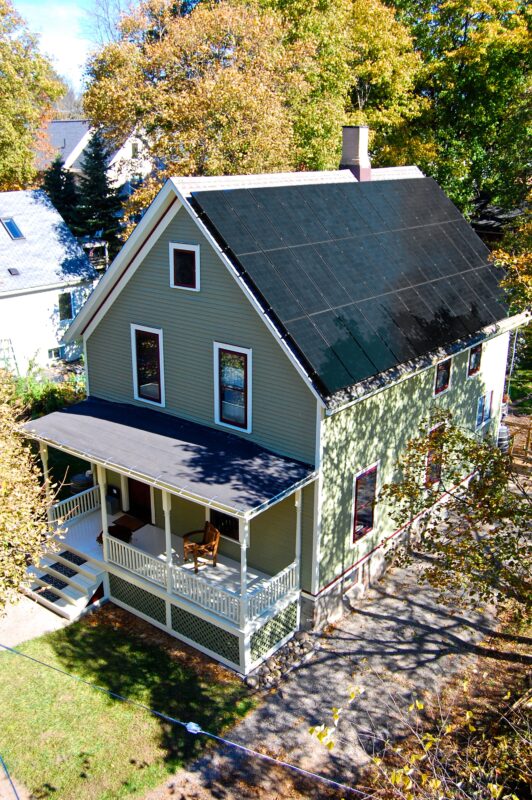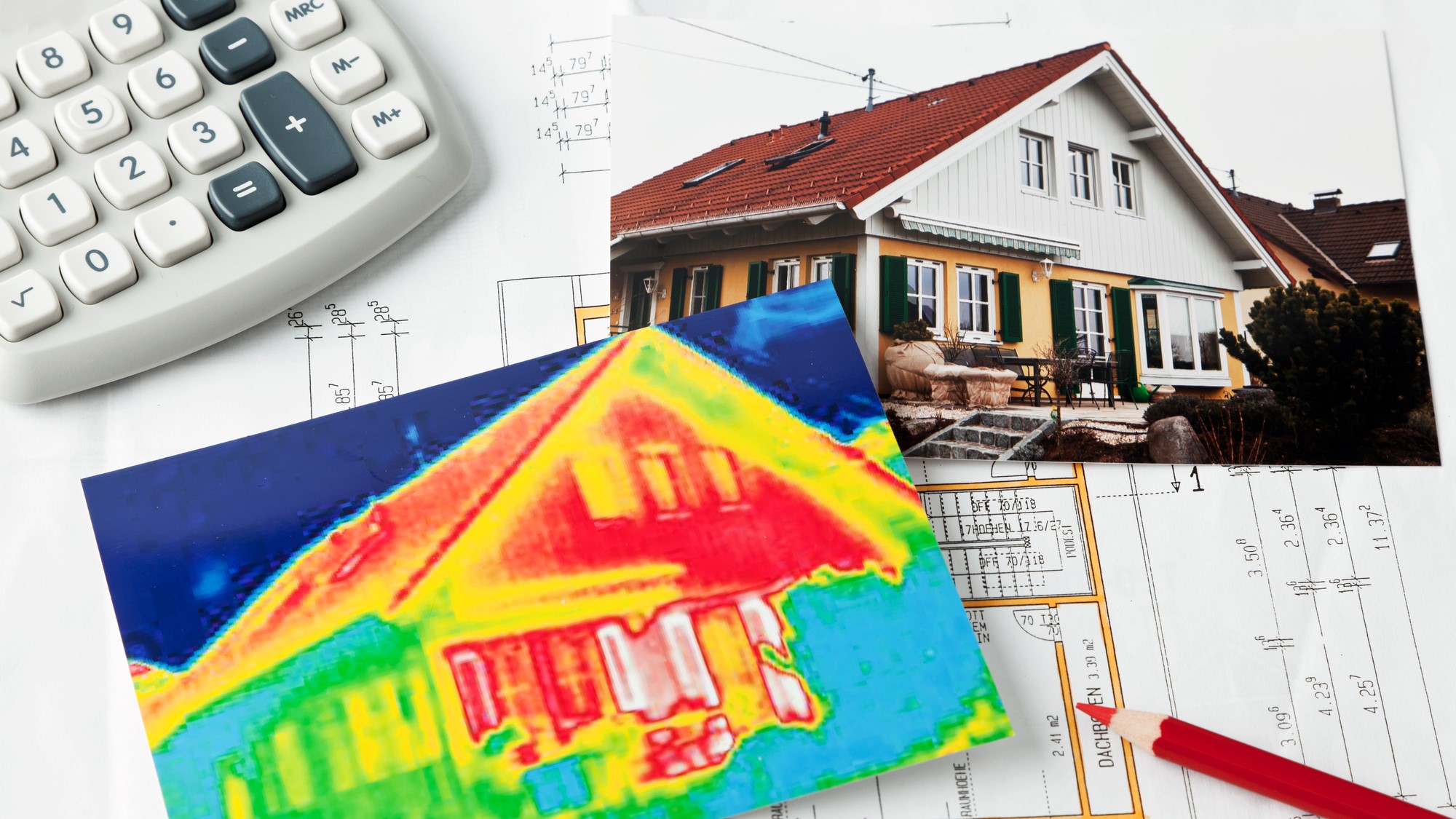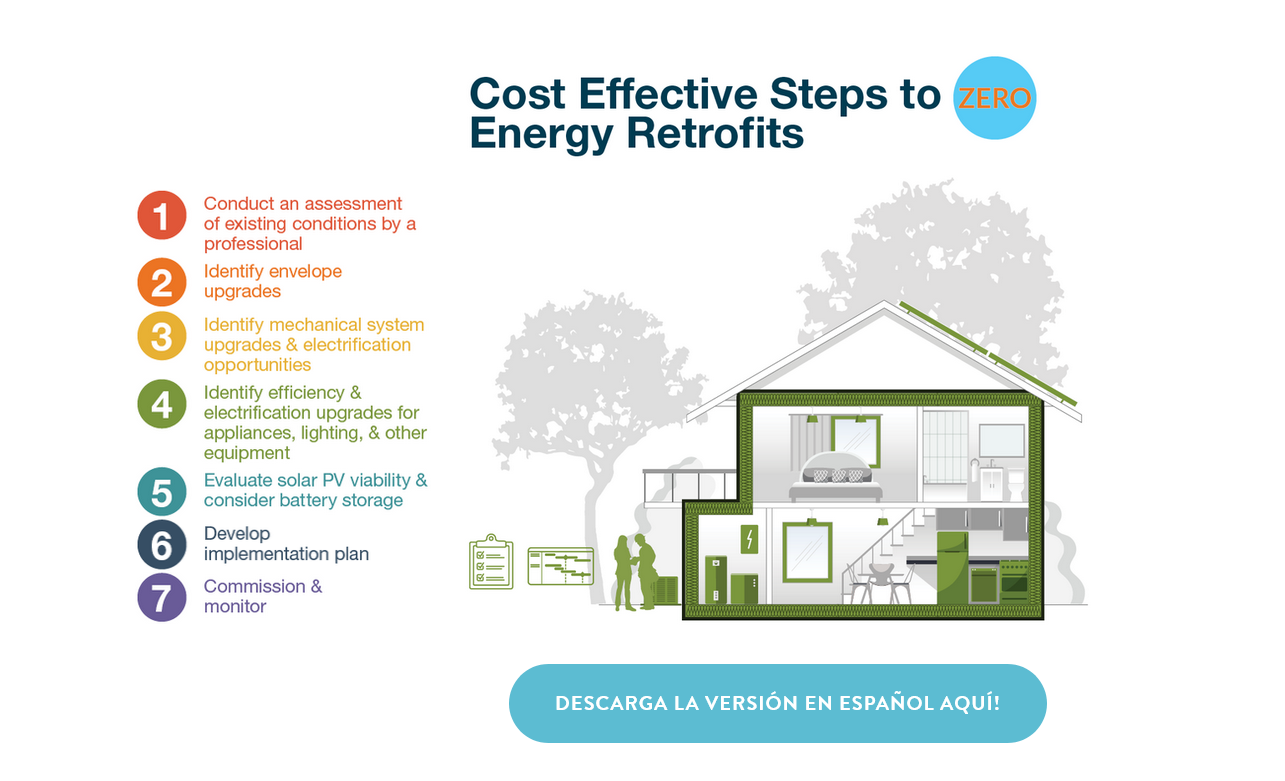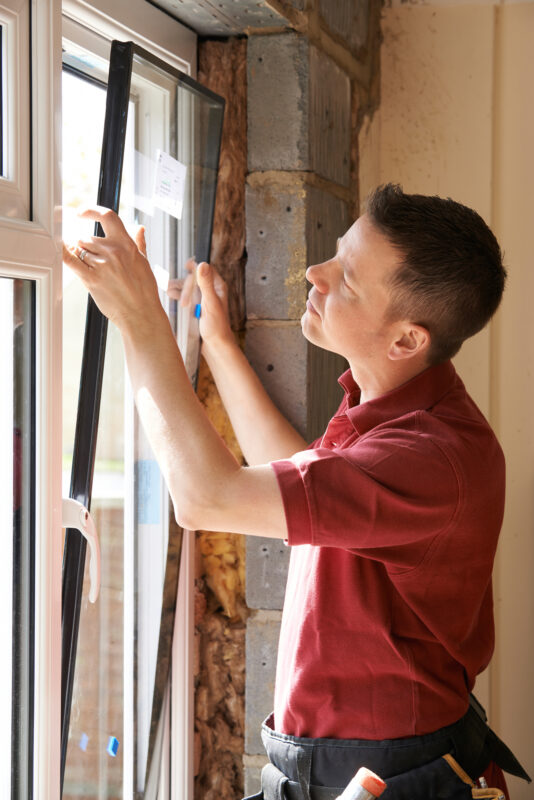Due to the sheer number of existing buildings, it’s not enough to focus solely on reducing greenhouse gas (GHG) emissions through new construction. And wider implementation of energy-efficient systems through retrofitting will have a massive impact. Moreover, retrofitting presents opportunities to address longtime inequities in the housing sector, providing broader access to energy-saving measures. The most common barriers are capital costs, and owners’ lack of knowledge that today’s reliable technologies pay dividends far into the future.
With the input of the Technical Committee, the ZERO Coalition has developed a handy infographic set to illustrate the smartest and most cost-effective path to retrofit buildings to zero energy (a follow-on to their resource for new construction). Each of the 7 Steps to Cost Effective Zero Energy Retrofits lists its role and importance in achieving zero energy, and strategies and resources for different types of homes and buildings. With the understanding that retrofitting to zero energy isn’t always possible, the tool can help designers, contractors, builders, advocates, and other stakeholders come closer to zero. Materials, equipment, and strategies are flexible, to conform to an owner’s specific budget and project constraints.
How to use the 7 Steps
Building professionals can use the resource to inform clients and help explain sustainable design-build processes that maximize energy efficiency and cost-effectiveness. All eight pages are easily integrated into PowerPoints, and are free to share with colleagues. A builder’s or architect’s website can reference the steps as a proven methodology that is part of their corporate mission. And it’s easy to write and post case studies that show how a project successfully followed the steps.
The design and construction team work together to integrate each step’s purpose and strategies. So the 7 Steps spur discussions on where additional evaluations and expertise may be required, and how the different trades can be impacted. There are reminders that existing buildings are all different and that upgrades will interact with each other, so sequencing and phased implementation require careful consideration. Future maintenance requirements and expected lifetimes of different systems are major factors in determining the lifecycle cost and carbon accounting.
Think globally, act locally
The ZERO Coalition unites businesses, nonprofits, and local governments to propel our shared goal to change how we build and retrofit our homes and businesses. We seek to reduce buildings’ carbon footprint and electrify them with clean energy. As a coalition, we are accelerating the transition to a decarbonized building sector in Oregon. But builders, designers, policymakers, and other members of the sustainable building industry can use the 7 Steps to advance building decarbonization anywhere in North America, and beyond.
Buildings in Oregon account for about 30% of Oregonians’ energy use and 40% of our GHG emissions, the most significant chunk after transportation. According to Rocky Mountain Institute, buildings also account for 40% of global energy GHG emissions. Architecture 2030 found that “To accommodate the largest wave of building growth in human history, from 2020 to 2060, we expect to add about 2.6 trillion ft2 (240 billion m2) of new floor area to the global building stock, the equivalent of adding an entire New York City to the world, every month, for 40 years.” This is why building decarbonization is finally getting wider attention. The time is now.
Equity via energy-efficient retrofits
Everyone can benefit from cost-effective energy efficiency, AND enjoy a healthy, comfortable, durable, resilient home, irrespective of household resources or rental status. Already, BIPOC (Black, Indigenous, and other People of Color), low-income, and rural communities struggle with high energy costs and the impacts of the climate crisis. Equity is baked into the mission at the ZERO Coalition, as there is a long history of discrimination, displacement, and violence against BIPOC groups and individuals in Oregon. As we make an impactful change, ZERO challenges and facilitates the different sectors of the sustainable building industry to build both equitably and sustainably.
We were very pleased to release The Spanish version of the 7 Steps to Cost Effective Zero Energy Retrofits in 2023. ZERO member LatinoBuilt translated the tool into Spanish to increase the reach of this valuable information. LatinoBuilt is a valued partner, a nonprofit trade association empowering Latino business owners and entrepreneurs in construction.

ZERO educates the architecture, engineering, and construction industries. Together, our members support energy-efficient building codes; advocate for policy changes in state and local governments; and encourage healthy, sustainable building and retrofitting. An energy efficiency–first approach can minimize renewable energy needs and reduce energy burdens—both costs and environmental impacts. The largest share of which is shouldered by BIPOC communities.
In providing educational and informational tools like the 7 Steps to Cost Effective Zero Energy Retrofits, the ZERO Coalition can make designing and building efficient, healthy, comfortable, durable, and resilient homes and buildings more accessible to all.
The author:
ZERO Coalition Manager Ashley Haight has a decade of experience in marketing and program management. She is adept at coalition-building and strategic planning, as well as project coordination and process improvement. As part of ZERO’s solution-oriented team, she works with members to accelerate equitable, sustainable policy change to decarbonize the built environment and meet Oregon’s climate obligations. As Co-chair of the Governance & Steering Committee, she was instrumental in centering the coalition’s mission on equity.
To incorporate the graphics and information into your website, proposals, and other communications, visit ZERO Coalition and download the full set in English and Spanish.
Our team researches products, companies, studies, and techniques to bring you the best of zero building. Zero Energy Project does not independently verify the accuracy of all claims regarding featured products, manufacturers, or linked articles. Additionally, product and brand mentions on Zero Energy Project do not imply endorsement or sponsorship unless specified otherwise.




Edelman says:
It’s truly amazing. I hope that one day, all buildings will achieve zero energy consumption. With the plethora of options available, such as solar, wind, and geothermal energy, it seems almost impossible for this not to happen.
Gervais says:
Embracing energy efficiency through retrofitting is our pathway to a greener future. By upgrading existing building systems, such as installing LED lighting, improving insulation, and optimizing HVAC systems, we can significantly reduce our carbon footprint while also enjoying long-term economic benefits.
Gervais says:
Can you elaborate on the key benefits of retrofitting existing buildings to achieve zero energy, especially in the context of reducing greenhouse gas emissions and addressing housing sector inequities?